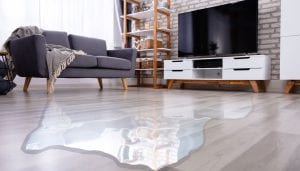Blog
Why Is Water Damage Prevention Crucial for Your Twin Falls Home
January 25, 2024
They say that prevention is better than cure, and when it comes to water damage in your Twin Falls home, this couldn’t be more true. Water damage can wreak havoc on your property, causing structural issues, mold growth, and costly repairs. In this discussion, we will explore the importance of water damage prevention, the common [...]
Read More... from Why Is Water Damage Prevention Crucial for Your Twin Falls Home
5 Best Causes of Residential Water Leaks in Twin Falls?
January 17, 2024
Are you experiencing frequent water leaks in your Twin Falls home? Wondering what could be causing these frustrating plumbing issues? Look no further. In this discussion, we will explore the five best causes of residential water leaks in Twin Falls. From plumbing system failures to faulty appliances and fixtures, we will delve into the most [...]
Read More... from 5 Best Causes of Residential Water Leaks in Twin Falls?
Why Hire Professionals for Water Damage Repair in Twin Falls?
January 2, 2024
Are you tired of dealing with the aftermath of water damage in your Twin Falls home? Well, it’s time to put down the bucket and mop and hire professionals who can handle the job with ease. When it comes to water damage repair, you need experts who have the knowledge and expertise to restore your [...]
Read More... from Why Hire Professionals for Water Damage Repair in Twin Falls?
4 Ways to Protect Your Twin Falls Home From Water Damage
December 18, 2023
Are you tired of feeling like your home is at risk of water damage? Just like the famous Greek myth of the Trojan horse, water damage can sneak into your Twin Falls home, causing extensive and costly destruction. But fear not! We have the solution to protect your beloved abode. In this guide, we will [...]
Read More... from 4 Ways to Protect Your Twin Falls Home From Water Damage

Top Water Damage Prevention Tip
April 13, 2023
Water damage is a serious issue that can lead to costly repairs and other risks. It is important for homeowners to be aware of how to prevent water damage in their homes. Water damage can occur suddenly or over time, depending on the source. For example, some common causes include plumbing leaks, floods, broken pipes, and [...]

Top 5 Reasons To Hire A Water Damage Expert
April 13, 2023
When it comes to water damage, it can be a daunting task to repair. Water damage can lead to costly repairs and may even cause more serious issues if left unchecked. Hiring an expert in the field of water damage restoration is key in properly restoring the property back to its original condition. The first [...]
Read More... from Top 5 Reasons To Hire A Water Damage Expert